In the Waldorf method, children learn to read their own writing before reading books. The idea is that children have a memory connection to words they have written and so it increases the possibility of success and reduces the pressure. Writing is also concrete, whereas reading texts is an abstract activity. So the bridge is to engage in writing first, and then begin reading your own writing rather than someone else’s.
Creating main lesson books is a great way for children to record their learning, writing summaries of new material and accompanying those summaries with drawings. Remember to have your children go back and re-read them after they are complete, at the end of the block and at the end of the year!
Sometimes, however, (like around February?) writing those summaries can become a bit tedious and resistance sets in.
Found poetry is a wonderful alternative to story summaries, just to mix things up a bit. This works well for any age.
Steps to Writing Found Poetry with Children
1. Pick a story or piece of text for one day’s presentation and read it aloud.
2. Together with your child or children, write down some key words or phrases that stood out for you in the story or new material. You can write these on a piece of paper or chalkboard.
3. Arrange the words and phrases into a poem about the subject, only adding a few words of your own if necessary. (Some English teachers will limit the number of words you may add to only 2 or 3!)
4. Give your poem a title, and have your child copy it into his or her main lesson book.
This is just one of the many ways to share poetry with your children. And it is much more successful than asking children to compose poems on their own from scratch (even teenagers!).
For some inspiration, listen to One Boy Told Me by Naomi Shihab Nye over at Poetry Everywhere. This is a beautiful poem by a talented poet consisting of words collected from things her young son said.
Other ideas for beginning to explore poetry include magnetic poetry where you can move the words around on a magnet board (great for reading practice and fun). New readers and even pre-readers benefit from help with this, but working with just one word at a time seems to take some pressure off.
One of my favorite poetry activities is Poetry Teatime.
Here’s how it works: bake some scones or special treats, serve up hot tea, and get out your poetry books. Then everyone flips through books finding poems they like and shares them! All while enjoying hot tea and scones. It’s very relaxing and a great way to explore poetry.
I encourage you to explore writing found poetry with your children and scheduling a Poetry Teatime!
Read more ideas in my post Sharing Poetry with Children.
How have you incorporated poetry into lessons at your house?


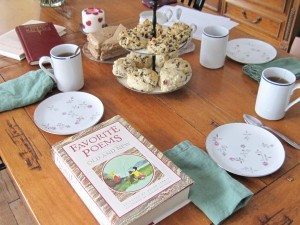

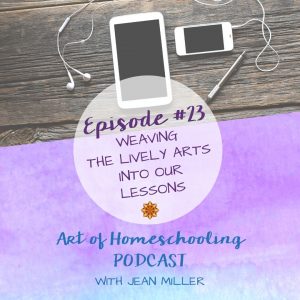

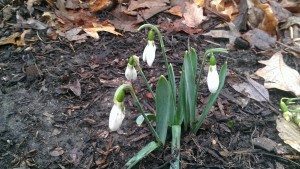
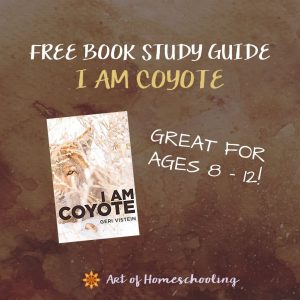
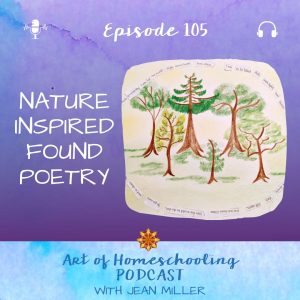

Found poetry is something we haven’t tried yet. I like the idea of using it as a break from summary writing. Thanks!
Yes, I hope you try it and I’d love to know how it goes! I really like it because it’s always pleasantly surprising.